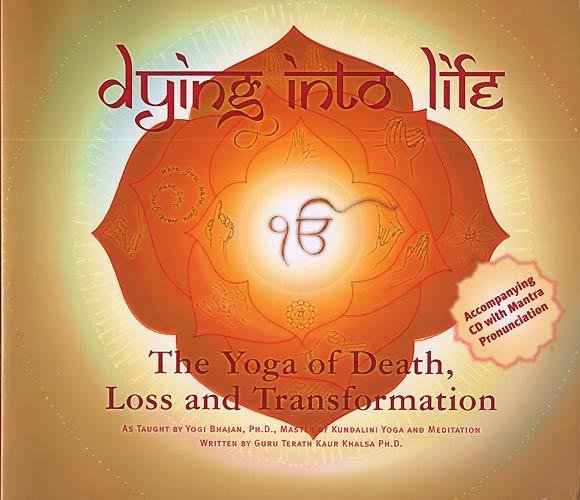Note: This is part 2 of this article - Part 1 is here.
The fourth aspect of Jiwan-Mukht relates to serving. As God Conscious beings, we are in the world. Historically, yogis and holy men spent their lives meditating in caves, isolating themselves from the rest of society. In this era, we can be ascetic within and secular without. We are like the lotus flower, with its roots in the mud and its flower floating on the water, untouched by the dirt. Whether we are a street sweeper or a brain surgeon, we can do everything with a consciousness of service. An ingredient of our lifetime pursuit can include sharing our spiritual knowledge for the good of all. The light is too vast to keep contained; the Aquarian Age is requesting that we share it with everyone.
Yogi Bhajan often challenged us to think about what legacy we want to leave to the world. “What do you want to be remembered for?” he’d ask us. This legacy not only involves our accomplishments that will live beyond us but our acts of kindness and service.
“May we improve ourselves each day. This is the time on Earth where we have to leave behind an impact, a legacy, so that people can find tranquility, peace and grace. Sat Nam.” - Yogi Bhajan
My Grandmother, Nana to me, lived during World War I and II and the Great Depression. Through it all, she single-handedly raised my mother and owned and operated a custom drapery shop in Beverly Hills. She made all the draperies, pillow covers and bedspreads herself and gave advise on interior design; many Hollywood movie stars were her customers. This is only the minor part of my Nana’s legacy. For in my family, what she is known for is her sweetness. I never heard her say a mean word to or about anyone. She accepted and loved us all for who we were without hesitation or conditions. She was not a particularly “religious” person, but what is more saintly than kindness. That was her legacy.
“Where there is kindness there is God.” - Yogi Bhajan
What legacy do you want to leave to the world?
The fifth and last aspect of Jiwan-Mukht has to do with our preparation for death. We prepare for death by how we live. The quality of our life will depend upon our understanding and preparation for death. There is a story of a Zen master who asked a student, "Are you prepared to die?” If you are not willing to die, you are not ready to “surrender to life."
In India there is a tribe called the Shivites who worship Shiva, the Lord of death and liberation. They realized that there has to be a respect for death so that there may be a good life. If a person does not understand death, he does not understand life. If a human fears death, he fears life.
The American Indians developed an extraordinary technique to prepare for death by using a death chant. It was used to maintain contact with the Great Spirit in time of threat or stress, such as when riding a runaway horse, confronted by a dangerous animal or when injured or ill. Immediately, the death chant came into their mind. It became a part of them, always available in a time of need. It created a familiarity with the unfamiliar - death.
In the Hindu tradition, there is another instance of this kind of presence of life/death. It is taught and practiced that to die with God’s name on your lips is a way of consciously returning to the Source. In an instant, one can drop the mind’s projection of the world and just be one with God. When Mahatma Gandhi was assassinated he said, “Ram,” as he fell. Ram is one of the names of God in the Hindu tradition. Gandhi lived and died with Ram on his lips and in his heart.
In Kundalini Yoga, we use special mantras, called Pran Sutras, or “master keys” for this purpose. They are to be used in life and become such a habit that at the time of death, one automatically chants it. Two such Pran Sutras are “Sat Nam” and “Wahe Guru.”
When a car cuts in front of us, almost causing an accident, are we cursing the other driver or can we automatically begin our pran sutra? When we are lying in bed in pain, can we focus on our Long Deep Breathing with the mantra Sat Nam, or are we fearful and angry? When one of our children is asserting her identity apart from us, are we angry and threatened or can we see it as a natural sequence of growth and expansion? It is an attitude about life, which becomes such a habit, that we automatically switch to at the time of death. We have to find our Jiwan-Mukht, spiritual connection, now. Waiting
until death will be too late. It has to be cultivated and practiced during life, to improve the quality of our life and the quality of our death.
“Try to live innocent, straight, calm, quiet and peaceful.” - Yogi Bhajan
PRAN BANDHA MANTRA MEDITATION
Pran Bandha Mantra means that mantra, or sound combination, that collects,binds, and commands the life force or prana. In our usual non-liberated state, we are controlled by our attachments. We become attached to our finite identity, to time, space and intensity of emotion. This mantra takes you beyond those finite attachments. It opens the door to another dimension of the Self. It merges you into the unlimited sea of prana and life.
This mantra forges a link between you as a finite unit magnetic field and the universal, creative magnetic field of energy that we call consciousness. The mantra is from Guru Nanak’s Japji (Various stanzas or Pauris of Japji will be presented in Appendix II). One who practices this to perfection experiences deathlessness. You can merge into the greater pranic body (universal energy) at the time of death and therefore become deathless. Prayers and mental desires become much more effective. This meditation can give you the capacity to embody a divine personality, and to become creative and fearless.
How To Do It
Sit with a straight spine, with a light Neck Lock (Jalandhar Bandh).
Eye Positition: With the eyes closed, focus at the Brow Point, rolling the eyes up slightly.
Mudra: Let the hands rest in the lap, right hand into the left palm. Or just sit with both hands in Gyan Mudra. Become completely still, physically and mentally, like a calm ocean. Listen to the chant for a minute. Feel its rhythm in every cell. Then join in the mantra. You can listen to the mantra here and sing along with the recording. There areother versions in the Gurbani Media Center as well. Just search on "pavan guru."
Mantra: Pavan Pavan Pavan Pavan
Para Paraa, Pavan Guru
Pavan Guru, Wha-Hay Guru
Wha-Hay Guru, Pavan Guru
Time: Continue for 11-31 minutes.
MEDITATION TO CONQUER SELF-ANIMOSITY
Our greatest enemy is our self. Self-defeating behaviors and attitudes occur when we do not accept ourselves. Our self-animosity distracts us from the real gift of life: the capacity to confront and experience the self in relationship to the Unknown Infinity of our self. This meditation conquers the state of self-animosity and gives us the ability to maintain a consciousness in support of the core self. The result is forgiveness.
How To Do It:
Sit with a straight spine, with a light Jalandhar Bandh (Neck Lock, as in previous meditation)
Mudra: Relax the arms at the sides and raise the forearms up and in toward the chest at the heart level. Draw the hands into fists and point the thumbs straight up toward the sky. Press the fists together in such a manner that the thumbs and fists are touching. The palms are toward each other. This meditation requires the upper torso to be held straight, without rocking back and forth.
Eyes: Fix the eyes at the tip of the nose.
There is no required mantra other than the subtle sound of the breath.
Breath: Inhale through the nose.
Exhale completely through the mouth.
Inhale deeply and smoothly through the mouth.
Exhale through the nose.
To End: Inhale and stretch the arms up over the head. Keep the stretched position as you take 3 more deep breaths. Relax.
TEN STEPS TO PEACE
TO REMOVE BAD MEMORIES AND PAINFUL EXPERIENCES
“This meditation takes care of phobias, fears, and neuroses. It can remove unsettling thoughts from the past that surface into the present. It can take difficult situations in the present and release them into the hands of Infinity. All this can be done in just forty seconds!” - Yogi Bhajan
This meditation is also effective in dealing with the daily stress of relationships in the workplace, school, home and community. Clean it out before it becomes a monster.
How To Do It:
1. Lower the eyelids until the eyes are only open 1/10th. Concentrate on the tip of
the nose. Silently say Wahe Guru in the following manner:
Wha - mentally focus on the right eye.
Hey -
mentally focus on the left eye.
Guru - mentally focus on the tip of the
nose.
2. Inhale and remember the encounter or incident which happened to you.
3. Exhale and mentally say Wahe Guru in the above manner.
4. Inhale. Visualize and re-live the actual feeling of the encounter.
5. Exhale and again mentally repeat Wahe Guru.
6. Inhale and reverse roles in the encounter you are remembering. Become the other person and experience their perspective.
7. Exhale and mentally repeat Wahe Guru.
8. Inhale. Forgive the other person and forgive yourself.
9. Exhale and mentally repeat Wahe Guru.
10. Inhale. Let go of the incident and release it into the Universe.
Repeat if necessary. Relax, breathing long and deep for an additional minute.
STRESS RELIEF AND CLEARING THE EMOTIONS OF THE PAST
This meditation is especially useful for dealing with stressful relationships and with past family issues.
How To Do It:
Put your hands at the center of your chest with the tips of the thumbs touching each other and each of the fingers touching the corresponding fingers on the opposite hand. There is space between the palms. The fingertips are pointing upward. Look at the tip of your nose and breathe 4 times per minute: inhale 5 seconds, hold 5 seconds, exhale 5 seconds. Continue for 11 minutes or until you feel relief from the stress.
This article was written by Jivan Joti Kaur Khalsa PhD (AKA Guru Terath Kaur Khalsa), who wrote the book, “Dying Into Life: The Yoga of Death, Loss and Transformation.” She also wrote the book, “The Art of Making Sex Sacred, Edition One and Two.” Her books are on sale on her webpage – www.jivanjoti.com and at www.spiritvoyage.com.
Dying Info Life Workshops:
Dying Into Life - The Yoga of Death, Loss and Transformation
Espanola, NM April 20-22, 2012
Summer Solstice, Espanola NM June 2012
Journey of the Soul: Through the Five Blue Ethers
Dying Into Life - The Yoga of Death, Loss and Transformation
Espanola/Santa Fe, NM September 21-23, 2012
Dying Into Life - The Yoga of Death, Loss and Transformation
Espanola/Santa Fe, NM March, 2013
Contact us today: [email protected]


